| Chapter 3. How to Use a Lathe
Using a Four-jaw Chuck
 Three-jaw Chuck and Four-jaw Chuck
Three-jaw Chuck and Four-jaw Chuck
A material into a chuck of a lathe is fixed by compressing jaws. A typical
chuck has three jaws. Because, in the general turning processing, we make
a column part as the center of a material. Then the three-jaw chuck is
very convenient.
On the other hand, when we make an offset part, or drill an offset hole,
a four-jaw chuck is often used. In the case of the four-jaw chuck, the
position of each jaw can be adjust optionally, and the chuck can fix the
material optional position. But it is difficult to adjust the position
of the material. Also it is not efficient, because a lot of time is needed
for changing of the chuck. The four-jaw chuck is not used always except
unavoidable cases. |
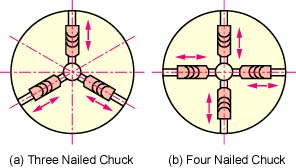
Fig.1, Three-jaw Chuck and Four-jaw Chuck
|
 Making a Hole at the Offset Position
Making a Hole at the Offset Position
| Figure 2 shows the body of a fish robot, PF-600. It has two offset holes
at the edge surface. The holes need high roughness and high accuracy of
diameter. Because the holes are waterproofed using O-rings. In such cases,
a drilling is not suitable. Then it is needed to use the four-jaw chuck
and boring processing. |

Fig.2, Part Plan (a Body of Fish Robot, PF-600)
|

Fig.3, Setting to Four-jaw Chuck
| A four-jaw chuck is set to a lathe for making of offset holes. |
|

Fig.4, Boring Process
|
Using a Boring bar, the surface is finished a high roughness.
|
|
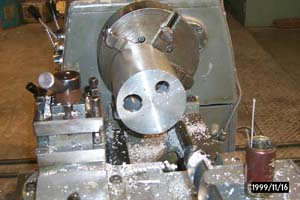
Fig.5, One Completed Hole
| One hole is finished, and another is processing. |
|
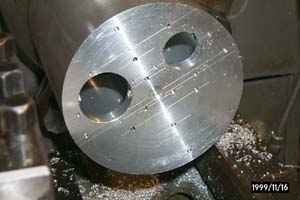
Fig.6, Offset Holes
| The part has many threads, so it is very complex. |
|
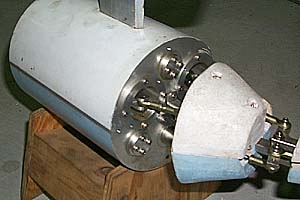
Fig.7, Assembled Parts
| The body is completed and assembled to the other parts. |
|
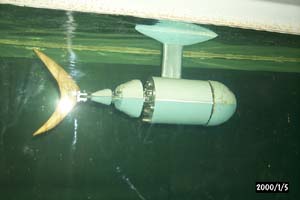
Fig.8, Fish Robot, PF-600
| The fish robot, PF-600 is swimming well, without water leakage. |
|
[ Metal Working TOP ]
[ Hirata HOME ]
[ Power and Energy Engineering Division ]
[ NMRI HOME ]
|
 Three-jaw Chuck and Four-jaw Chuck
Three-jaw Chuck and Four-jaw Chuck Making a Hole at the Offset Position
Making a Hole at the Offset Position Three-jaw Chuck and Four-jaw Chuck
Three-jaw Chuck and Four-jaw Chuck Making a Hole at the Offset Position
Making a Hole at the Offset Position